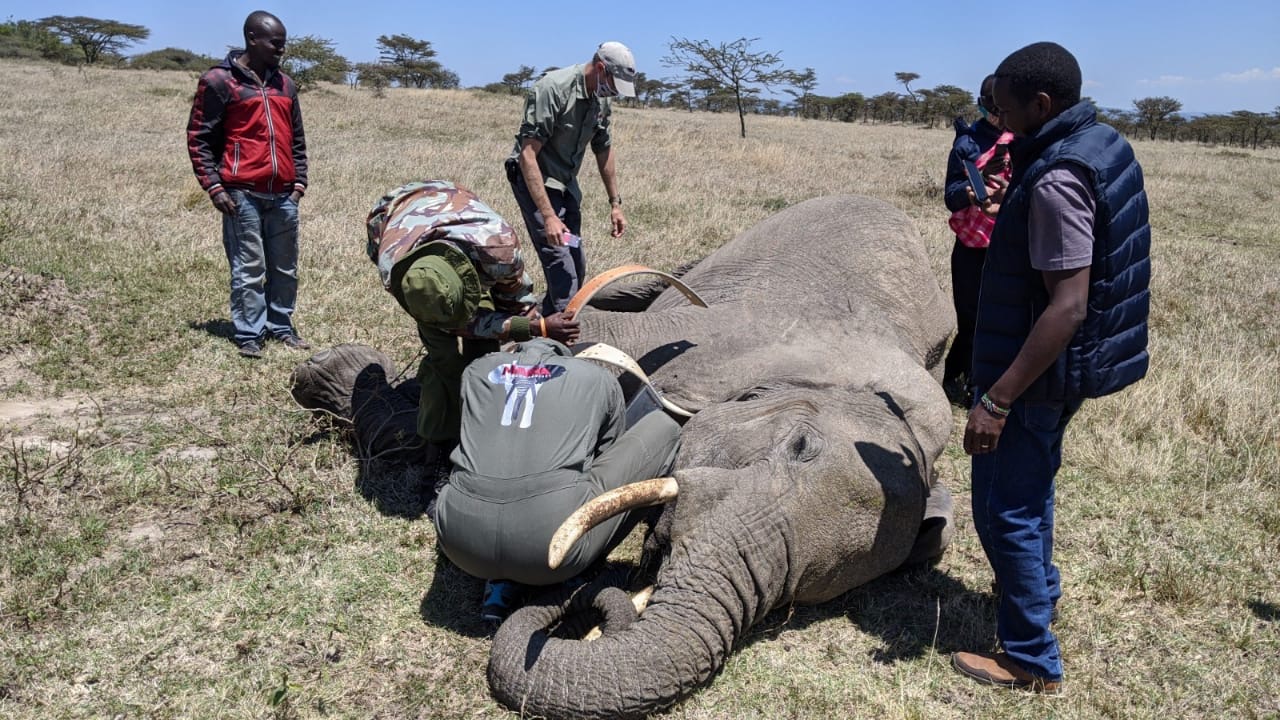In December 2019, Olarro Conservancy supported Mara Elephant Project with the purchase of five elephant collars set to be deployed in the Mara in 2020 and 2021. Kenya Wildlife Service (KWS) and MEP successfully deployed three of the five elephant collars in 2020 despite additional challenges presented by COVID-19. The two newly collared elephants and one re-collared elephant are all crucial candidates for KWS and MEP to collect data on and monitor how they move in the ecosystem.

The five collars at MEP HQ ready to be deployed on elephants.
When collaring, KWS and MEP focus on candidates that will gather useful spatial data meaning elephants in border areas, areas of conflict or areas outside of conservancies or national reserves. We are also looking for candidates that represent crop raiding elephants identified across the dispersal area and David was exactly that. David was collared in August 2020 in the southern area of Olderekesi Conservancy near Cottars 1920s Safari Camp. He belonged to a small group of bull elephants going into settlement areas and raiding tomato farms along the Sand River. He’s providing data that is used daily to mitigate human-elephant conflict and inform ranger deployment in this area. In the long-term, the movement data this elephant generates will help us better understand the connectivity between the Maasai Mara National Reserve along the Sand River into the southern Loita Forest, an important area of operation for MEP rangers. The collar data is not only helping with the joint KWS and MEP security operations but is also building up a valuable database on the spatial movements and resource selection of elephants. Particularly useful are datasets that can show changes in movements over time in response to changing environmental and anthropogenic conditions.

The helicopter being used during David’s collaring operation on August 17.
In addition to David, newly collared elephant Harriet is helping to build a case for support to protect this key Sand River corridor in the Mara, an important source of surface water for elephants and all wildlife. The river is key for the surrounding communities as well who use it as a source of water and who farm tomatoes along its banks, which leads to conflict as the people and wildlife are competing for the same resource. Previous data has shown elephant connectivity from the Mara to the Loita Forest through this area, but our goal with these additional candidates is to collect more movement data to use for landscape planning to maintain connectivity along this southern route. Not only that, but these elephants are providing an early warning to conflict for KWS and MEP rangers stationed nearby.

Harriet’s collaring operation on September 13.
Finally, the third elephant candidate given a collar provided by Olarro is Hannibal. He was originally collared due to his proximity to Nairobi, but once collared by KWS and MEP, his movements showed him moving out of Nairobi and into the Suswa and Mosiro areas of the Rift Valley, an area of high conflict. He has actually joined up with another collared bull elephant in this area, Napoleon, and often MEP is called in by KWS to help respond to conflict in the Rift Valley caused by them.

On July 6, 2020 MEP was called in by KWS to help respond to conflict in the Rift Valley caused by Hannibal and Napoleon. MEP CEO Marc Goss deployed the helicopter to push the elephants out of the irrigation area alongside the Ewaso Ngiro River.
In response, KWS and MEP have established geo-fences using Hannibal’s movements that give an early warning to crop raiding elephants nearby. In November 2020, Hannibal’s original collar started to show a low battery alert due to faulty hardware and immediately needed to be replaced in order to continue his long-term monitoring. On November 25, KWS and MEP successfully re-collared Hannibal.

CEO Marc Goss during Hannibal’s re-collaring operation.
Overall, despite challenges in 2020, Olarro Conservancy’s support of the deployment of three elephant collars helped MEP respond to conflict and increase protection for wildlife and habitat. We look forward to updating you on the two additional collar deployments in 2021.


